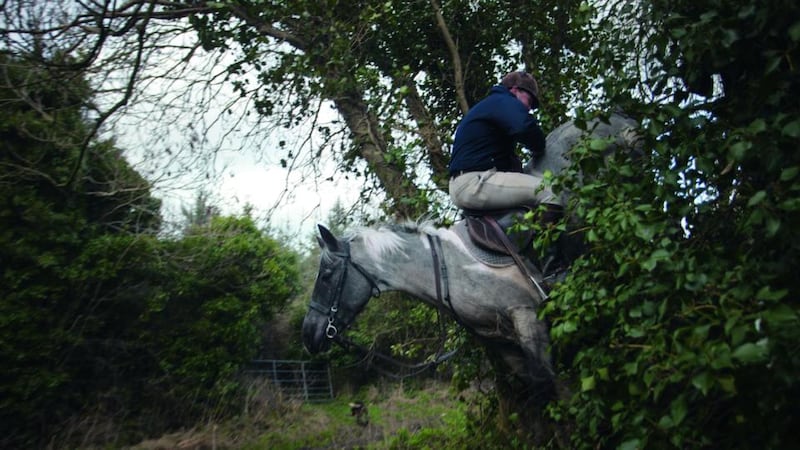After almost 30 years in London Seamus Murphy finally considered himself an outsider in Ireland. Enough time had passed since his departure in the mid-1980s, he thought, for him to be able to return to the country he grew up in with his camera and to view it dispassionately, as "an exile, an escapee".
When he was growing up in north Dublin, in the 1960s and 1970s, the acclaimed photographer felt he couldn’t leave quickly enough. Hearing from his older sisters, who had spent much of their childhood in London, how much better everything was over there, he felt destined to go.
"Things interested me more outside the country than within," he recalls. "A lot of people of my generation were rejecting all things Irish, and there was a lot of influence from abroad, not just England but America. Of course, as you get older, and living away, you appreciate more what is there, and what is being lost, but at the time I couldn't wait to leave."

In 1986, after a short stint in the US, Murphy landed in London, which has been his home ever since, with frequent trips abroad for work. Between 1994 and 2010 he visited Afghanistan 14 times to record the human struggle during a time of political turmoil. He also took trips around Europe and to the Middle East and Latin America, winning seven World Press Photo awards and collaborating with the musician PJ Harvey along the way.
With the exception of a few small assignments Murphy seldom looked back towards Ireland as a place for a potential project. But then he photographed a man riding backwards over a hedge during a hunt in Co Galway in 2011, while on a commission for the London Independent.
Murphy describes that picture in his new photographic book, The Republic, as "a glimpse of the comedy we make of life, death and the rules in Ireland".
“Ireland suddenly struck me as a place where I could apply the things I had learned in my trade in my home country. I thought it was time,” he says. “Once I got that picture it propelled me. That spirit – a slightly lawless, breaking-the-rules, feck-it-all attitude – that’s what I was after.”
Murphy found it very difficult to describe to other people what it was he wanted to achieve with the book, however.
“There is a surrealism that I love, that I feel very at home with, that feels very familiar. I get the same feeling in Afghanistan, funnily enough. We seem to be able to embrace the absurd, and I like that.
“I couldn’t go into a pub and say, ‘I’m here to photograph Ireland: I’m trying to embrace the absurd.’ That wouldn’t go down very well. But that’s what I suppose I was trying to do.”
The Republic is the result of multiple trips back to Ireland over 15 months in 2014 and 2015, an attempt to capture the spirit of the people approaching the 100th anniversary of the 1916 Rising. The result is a portrait of modern Ireland with an almost timeless quality.
A photograph of the 95-year-old IRA veteran John Snee, taken in the exercise yard in Kilmainham Gaol in 1997, is sandwiched between a pink-hued picture of a Pantibar drag queen and another of a cluttered kitchen where a woman is getting a tattoo beside a mother nursing a newborn. The scenarios are everyday but always have a quirk, from a cheeky glint in an elderly man's eye to the dog with his leg cocked behind a group of oblivious hillwalkers.
Although Murphy’s trip around Ireland coincided with several momentous events, including the passing of the marriage-equality referendum last year, the book doesn’t document current affairs directly; instead it takes an oblique view. The two photographs referencing that great social change that made the final cut in the book are of the drag queen and of two gay couples dancing in a club.
“The 100th anniversary [of 1916] is the ideal opportunity to look at the republic Ireland has created – not necessarily to judge. I was just looking at it, observing it, holding it up to the light,” Murphy says.
“What surprised me was that the people haven’t changed very much. The attitudes are still very similar. If I had done this project at the height of the Celtic tiger, perhaps I would be saying something different. But the crash in 2008 seems to have restored a sense of normality.”
Murphy says he found the project, and the process of returning to spend so much time in Ireland, much more difficult than he had envisaged.
“For the amount of work, I would normally have three books. I thought I was much more of an outsider than I was. Sometimes to really get under the surface, to see things, to operate, you do need to be an outsider. I found myself slipping into that mode of it being too familiar, even though I had been away 30 years. It was perhaps the most surprising thing of all,” he says.
“Ireland is not my home at the moment, but it is still a home. I was surprised at how in tune I was still with the place. It was almost an unconscious connection.”
The Republic is published by Allen Lane










